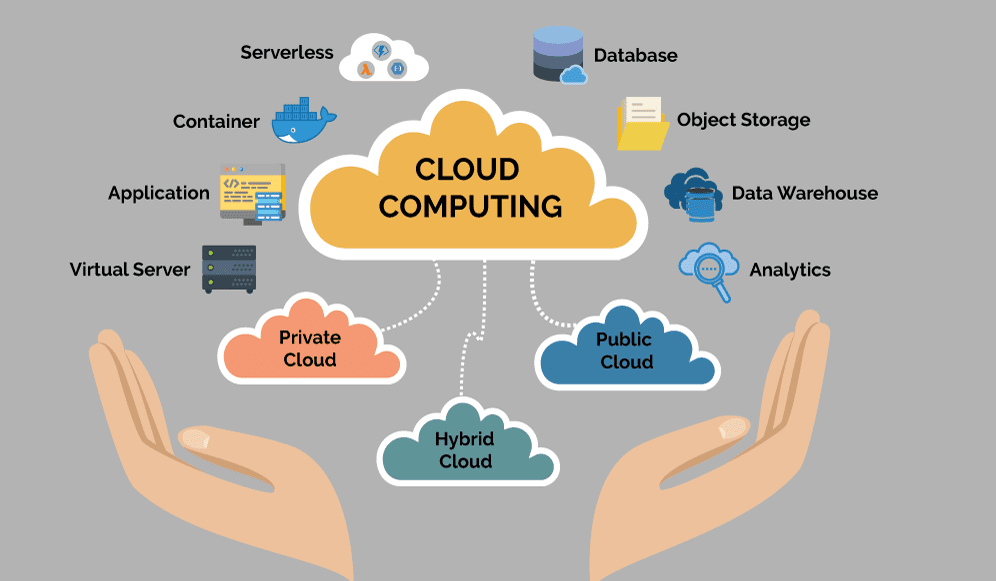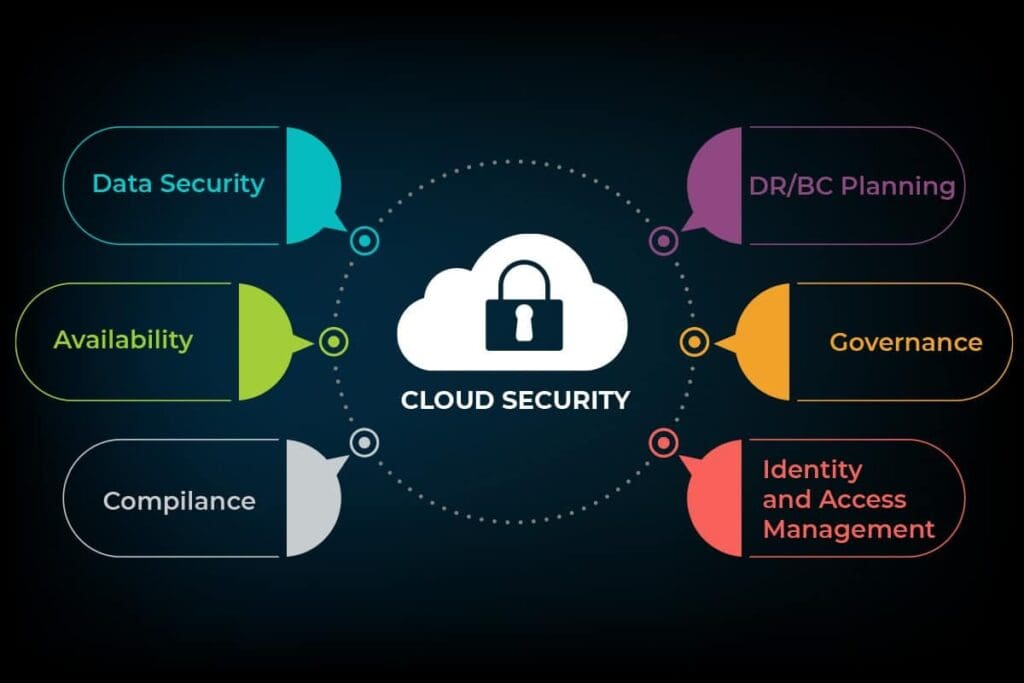Cloud computing has completely transformed how individuals and businesses store, share, and manage data. With this growth, cybersecurity in cloud computing has become essential, as almost everything we do online now relies on cloud services—from streaming movies on Netflix, saving photos on Google Drive, collaborating on documents through Microsoft 365, to hosting websites on platforms like AWS and Azure.
The cloud is convenient, cost-effective, and accessible, which is why millions of people and organizations worldwide depend on it. But with these benefits comes a critical question: is your data truly safe in the cloud?
Cyberattacks are becoming more advanced, and risks such as data breaches, ransomware, insider threats, and misconfigurations are growing. Cybersecurity in cloud computing has never been more important—not just for large corporations, but also for small businesses and individual users.
This blog will explore what cybersecurity in cloud computing is, its benefits, the shared responsibility model in cloud security, common risks and real-life incidents, and best practices to ensure your data stays safe. By the end, you will have a complete understanding of cloud security and how to protect your digital assets.
What is Cloud Computing?
Cloud computing simply means using the internet to access and store files, apps, and software instead of depending only on your personal computer or company servers. Instead of buying expensive hardware, you rent services online from a cloud provider.
For example, storage services like Google Drive, Dropbox, and iCloud let you keep files online. Enterprise services like Microsoft Azure and Amazon Web Services provide companies with computing power, hosting, and advanced tools. Entertainment platforms like Netflix and Spotify deliver movies, music, and games directly from the cloud.
The main idea is that cloud computing allows users and businesses to scale up quickly, reduce costs, and access resources from anywhere. This flexibility makes it an essential part of modern digital life.

Key Features and Benefits of Cloud Computing
- Scalability: Quickly increase or decrease resources based on demand.
- Cost-effectiveness: Pay only for what you use, avoiding large upfront hardware costs.
- Accessibility: Access files and applications from anywhere on any device.
- Collaboration: Multiple users can work on the same project in real time.
- Automatic updates: Providers handle software updates, security patches, and maintenance.
Understanding Cybersecurity in the Cloud
Cybersecurity in cloud computing refers to the technologies, policies, and practices used to protect cloud-hosted data, applications, and systems from cyberattacks.
Cloud providers like AWS, Azure, and Google Cloud invest heavily in security measures, including encryption, firewalls, intrusion detection systems, and AI-powered monitoring.
However, security is not the responsibility of the provider alone. It follows the Shared Responsibility Model.
The provider secures the infrastructure, which includes servers, storage, networking, and physical data centers. Users, on the other hand, must ensure their applications, accounts, passwords, and access permissions. In short, the cloud itself is secure, but users must actively manage their part of security.
Common Security Concerns in Cloud Computing
Even with robust provider security, cloud users face several risks:
Data breaches occur when hackers gain access to sensitive information, such as customer data or financial records. Data loss can happen when files are accidentally deleted, corrupted, or lost due to mismanagement or system errors. Account hijacking allows attackers to take control of accounts using stolen credentials. Insider threats arise when employees or contractors misuse access intentionally or accidentally. Insecure APIs, which are poorly designed connection points between systems, can leave gaps for attackers. Compliance issues occur when companies fail to meet regulations like GDPR, HIPAA, or PCI DSS, which can lead to fines and reputational damage.
By understanding these risks, businesses and individuals can take steps to reduce exposure.

Advantages of Cloud Security
- Advanced protection: Providers use encryption, firewalls, and AI-driven monitoring.
- Disaster recovery: Built-in backup and failover systems allow quick data recovery.
- Compliance support: Many providers meet strict standards like ISO 27001, SOC 2, HIPAA, and GDPR.
- Expert management: Security updates and patches are handled by trained professionals.
Disadvantages and Risks of Cloud Security
- Shared responsibility: Users must maintain strong passwords and multi-factor authentication, or attackers can bypass security.
- Third-party risks: Vulnerabilities may exist in vendors or their subcontractors.
- Data location issues: Data stored in global data centers can create legal or compliance concerns.
- Zero-day attacks: New, previously unknown vulnerabilities can affect even the most secure providers.
Real-Life Cloud Security Incidents
Real-world incidents show that mismanagement, not the cloud itself, is often the weak point.
In 2019, Capital One exposed over 100 million customer records due to a misconfigured AWS firewall. Many organizations have accidentally left Amazon S3 storage open to the public, leaking sensitive data. Ransomware attacks increasingly target cloud backups, preventing organizations from restoring their own files without paying a ransom.
These examples emphasize that while cloud infrastructure is secure, human error and poor configuration are major causes of breaches.
Best Practices for Ensuring Cloud Data Safety
Protecting your data in the cloud requires awareness and proactive steps:
Strengthen access and authentication by using multi-factor authentication for all accounts, creating strong, unique passwords, and limiting user access to only what is necessary. Encrypt data both at rest and in transit, and consider using your own encryption keys for highly sensitive information.
Monitor and audit access by setting alerts for unusual login attempts, reviewing user permissions regularly, and tracking user activity through logging features. Prevent misconfigurations by carefully setting up cloud storage, using cloud security posture management tools, and checking settings frequently.
Maintain backups both in the cloud and offline, and regularly test recovery procedures to ensure quick recovery in case of an attack. Perform vendor due diligence by selecting providers with proper certifications and reviewing shared responsibility guidelines to ensure alignment with your business needs. Train employees on phishing awareness, safe login practices, and proper data handling, and conduct regular security awareness programs with simulated attacks to reinforce learning.
Conclusion
Cloud computing offers speed, flexibility, and cost savings, but security is a shared responsibility. Providers secure the infrastructure, but users must ensure their access, applications and data.
Key takeaways include the importance of protecting user accounts, understanding risks like misconfigurations and insider threats, and following best practices such as multi-factor authentication, encryption, audits, and employee training.
Data can be safe in the cloud if users actively manage their part of security. The future of cloud cybersecurity relies on collaboration between providers, businesses, and users. By staying proactive, you can enjoy the benefits of cloud computing while keeping your digital assets secure.
